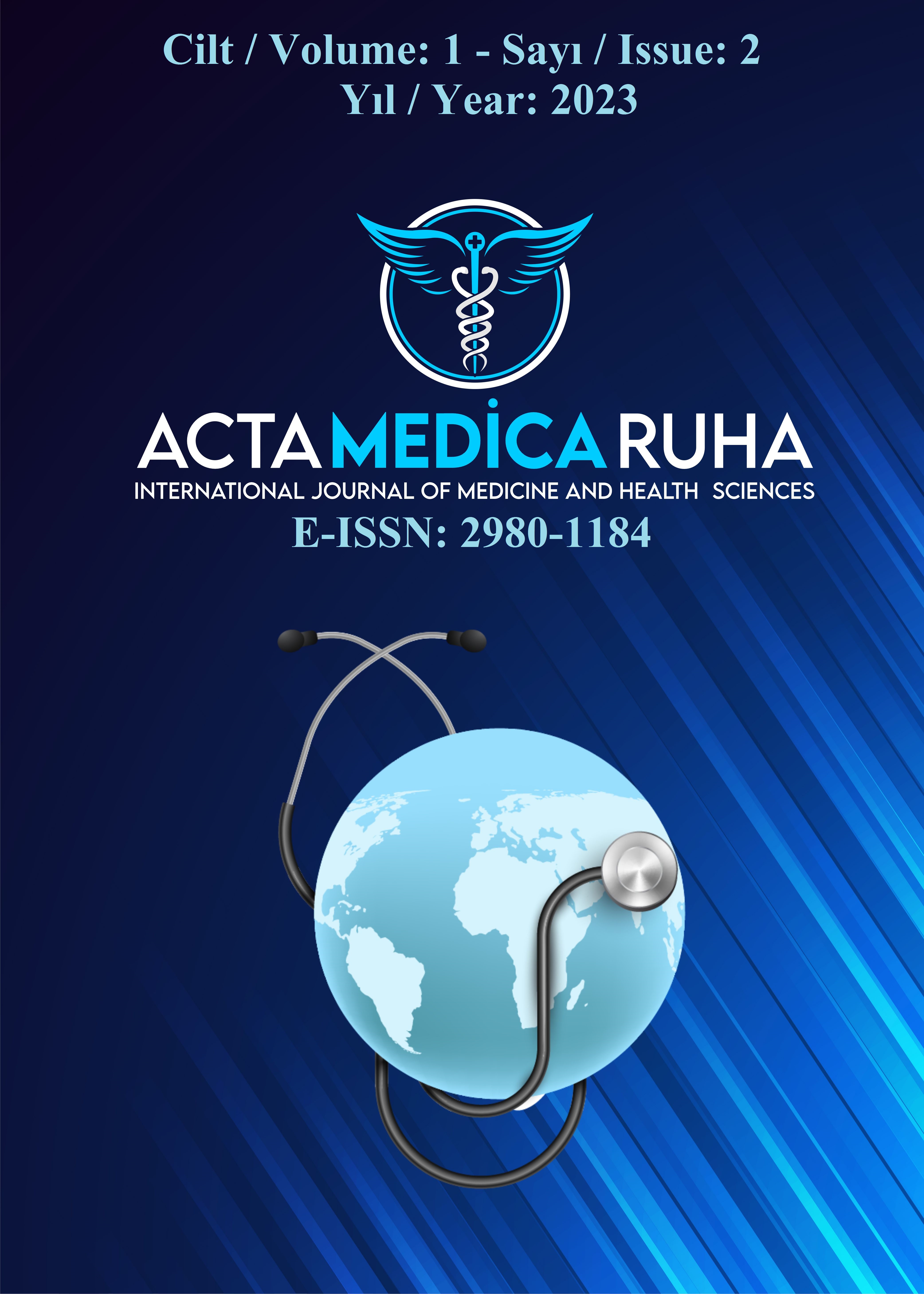Evaluation Of Anxiety In Patients Applying To Anesthesia Out - Patient Clinic
Research Article
DOI:
https://doi.org/10.5281/zenodo.7851063Keywords:
Anesthesia,, Anxiety,, State-Trait Inventory Test,, Surgery,, Survey.Abstract
Objective: To determine the effects of demographic factors as age, education, gender, marital status on anxiety level and anxiety levels and reasons of the patients those will be operated electively.
Method: A total of 800 patients ≥18 years who has been prepared for elective surgery and completed the questionnaire at the anesthesia outpatient clinic have been enrolled in this study. Patients ≥18 years old, who were classified as ASA I – III according to the American Society of Anesthesiologists (ASA), literate individuals, subjects without any psychiatric or neurological disease, patients who did not use psychiatric drugs or alcohol (chronic consumers) were included in the study.
Results: The highest STAI – I value was found in 31 – 50 age group. Pre-operative STAI – I value was higher in women (p<0.001). When anesthesia history was evaluated 479 of the 700 patients were received anesthesia previously and STAI – I scores were numerically higher in these patients (43.3+-9.4 vs. 41.8+-9.7) (p=0.056). University graduates had higher levels of anxiety on awakening during surgery (p=0.002). When the relation between the anesthesia anxiety scores and gender was evaluated women mostly anxious about the post-operative pain and their family.
Conclusion: It is natural that one could experience a certain form of anxiety before, during and after a surgical procedure. This research elaborated that being women and no previous history of anesthesia had significantly affected per-operative anxiety. Briefing the patient in anesthesia examination might play an important role to relieve the patient.
References
Taşdemir A, Erakgün A, Nuri Deniz M, Çertuǧ A. Comparison of preoperative and postoperative anxiety levels with State-Trait Anxiety Inventory Test in preoperatively informed patients. Turk Anesteziyoloji ve Reanimasyon Dern Derg. 2013;41(2):44–9
Laufenberg-Feldmann R, Kappis B. Assessing preoperative anxiety using a questionnaire and clinical ratings: a prospective observational study. Eur J Anaesthesiol. 2013;30(12):758–63
Jlala HA, French JL, Foxall GL, Hardman JG, Bedforth NM. Efect of preoperative multimedia information on perioperative anxiety in patients undergoing procedures under regional anaesthesia. Br J Anaesth. 2010;104(3):369–74
Norris W, Baird WL. Pre-operative anxiety: a study of the incidence and aetiology. Br J Anaesth 1967;39(6):503-9.
Domar AD, Everett LL, Keller MG. Preoperative anxiety: Is predictable entity? Anesth Analg 1989;69(6):763-770.
Gönüllü M, Turan ED, Erdem LK ve ark. Anestezi uygulanacak hastalarda anksiyete düzeyinin araştırılması. Türk Anest ve Rean Cem 1986;14:110-3.
Turhan Y, Avcı R, Özcengiz D. Elektif Cerrahi Hazırlığında Preoperatif ve Postoperatif Anksiyetenin Hasta Memnuniyeti ile İlişkisi. Anestezi Dergisi 2012; 20 (1): 27 - 33.
Mavridou P, Dimitriou V, Manataki A, Arnaoutoglou E, Papadopoulos G. Patient’s anxiety and fear of anesthesia: efect of gender, age, education, and previous experience of anesthesia. A survey of 400 patients. J Anesth. 2013;27(1):104–8.
Pritchard MJ. Using the Hospital Anxiety and Depression Scale in surgical patients. Nursing Standard 2011;25,34,35-41),
Garden AL, Merry AF, Holland RL et al. Anaesthesia information– what patients want to know. Anaesth Intensive Care 1996;24:594-598
Bugge K, Bertelsen F, Bendtsen A. Patient’s desire for information about anaesthesia: Danish attitudes. Acta Anaesthesiol Scand1998; 42: 91-96.
Bondy LR, Sims N, Schroeder DR. The effect of anestheticpatient education on pre-operative patient anxiety. Reg Anest Pain Med 1999; 24: 158-164.
Nagrampa D, Bazargan-Hejazi S, Neelakanta G, Mojtahedzadeh M, Law A, Miller M. A survey of anesthesiologists’ role, trust in anesthesiologists, and knowledge and fears about anesthesia among predominantly Hispanic patients from an inner-city county preoperative anesthesia clinic. J Clin Anesth. 2015;27(2):97–104
Matthias AT, Samarasekera DN. Preoperative anxiety in surgical patients: experience of a single unit. Acta Anaesthesiol Taiwanica. 2012;50(1):3–6.
Demir A, Akyurt D, Ergün B, Haytural C ve ark. Kalp cerrahisi geçirecek olgularda anksiyete sağaltımı. Türk Göğüs Kalp Damar Cerrahisi Dergisi 2010;18:177-82
Kim WS, Byeon GJ, Song BJ, Lee HJ. Availability of preoperative anxiety scale as a predictive factor for hemodynamic changes during induction of anesthesia. Korean J Anesthesiol 2010; 58:328-33.
Zemła AJ, Nowicka-Sauer K, Jarmoszewicz K, Wera K, Batkiewicz S, Pietrzykowska M. Measures of preoperative anxiety. Anaesthesiology Intensive Therapy. 2019; 51: 64–69.
Shevde K, Panagopoulos G. A survey of 800 patients knowledge, attitudes and concerns regarding anesthesia. Anesth Analg. 1991; 73: 190-198
Tulloch I, Rubin JS. Assessment and Management of Preoperative Anxiety. Journal of Voice. 2019; 33: 691–69
Stamenkovic DM, Rancic NK, Latas MB, Neskovic V, Rondovic GM, Wu JD, et al. Preoperative anxiety and implications on postoperative recovery: what can we do to change our history. Minerva Anestesiologica. 2018; 84: 1307–1317.
Jawaid M, Mushtaq A, Mukhtar S, Khan Z. Preoperative anxiety before elective surgery. Neurosciences 2007; Vol. 12 (2): 145-148.
Şekerci S, Akpek E, Göktuğ A Çetinsoy BC, Karabıyık L, Erdemli Ö ve ark. Hasta ve yakınları ile toplumun farklı kesimlerinin anestezi ve uygulamaları konusundaki bilgi ve davranışları. Anestezi Dergisi 2001;9(1):48-51.
Aykent R, Serhat K, Emre Ü, Ayla T, Haydar Ş. Preoperatif anksiyete nedenleri ve değerlendirilmesi: APAIS ve STAI skorlarının karşılaştırılması. Turkiye Klinikleri J Anest Reanim 2007;5(1):7-13.
Eberhart L, Aust H, Schuster M, Sturm T, Gehling M, Euteneuer F,Preoperative anxiety in adults—a cross-sectional study on specific fears and risk factors. BMC Psychiatry. 2020; 20: 140.
Kindler CH, Harms C, Amsler F, Scholl T, Scheidegger D. The Visual Analog Scale allows effective measurement of preoperative anxiety and detection of patients’ anesthetic concerns. Anesth Analg 2000; 90: 706-712
Ahmetovic-Djug J, Hasukic S, Djug H, Hasukic B, Jahic A, Impact of preoperative anxiety in patients on hemodynamic changes and a dose of anesthetic during induction of anesthesia Medical Archives. 2017; 71 (5) 330–333
Haugen AS, Eide GE, Olsen MV, Haukeland B, Remme AR, Wahl AK. Anxiety in the operating theatre: a study of frequency and environmental impact in patients having local, plexus or regional anaesthesiology. J Clin Nurs 2009; 18: 2301-10.
Hobson JA, Slade P, Wrench IJ, Power L. Preoperative anxiety and postoperative satisfaction in women undergoing elective caesarean section. Int J Obstet Anesth 2006; 15: 18-23.
Downloads
Published
How to Cite
Issue
Section
License
Copyright (c) 2023 Acta Medica Ruha

This work is licensed under a Creative Commons Attribution 4.0 International License.











